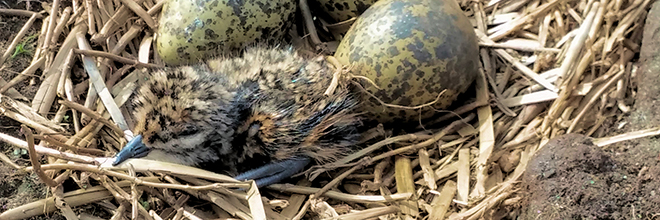Climate change keeps progressing: Birds are nesting earlier

A recently published study on data collected by bird hobbyists, established that 26 common Finnish bird species have started their nesting earlier during the past fifty years.
Birds time their nesting according to which time of the year can provide the most food for their hatching young. For example, species with young dependent on insects for food will try to time their nesting based on the amount of insects available. Conditions preceding the nesting give the birds hints on what is to come.
The study compared the time when birds began to lay their eggs to the spring’s temperatures and rainfall. The data consisted of nearly 130,000 observations of bird nests submitted by volunteer bird hobbyists between 1961 and 2012.
As average spring temperatures increased, all of the 26 bird species in the study began nesting earlier.
“Nesting was started earlier regardless of whether the species in question was a migratory bird or one that winters in Finland,” says researcher Edward Kluen from the Finnish Museum of Natural History, an independent institute of the University of Helsinki.
Species that winter in Finland, such as the great tit and the Eurasian treecreeper, made the biggest changes to their nesting schedule, while species that winter relatively nearby, such as the fieldfare and the common starling, made smaller changes, and species that migrate long distances, such as the European pied flycatcher and the common tern, made relatively minor changes.
“It is of course easiest to observe how quickly spring is progressing and change behaviour accordingly when the birds are here," Kluen muses about these discrepancies.
To cope in a changing climate, migratory birds must also alter their behaviour. The recent study proves that birds that winter in Finland or nearby countries have already made significant amendments to their behaviour.
"Birds that migrate long distances, have managed to start their nesting a little earlier, but it is considerably difficult to predict how the Finnish spring will proceed when the birds are in central Africa. Whether these birds can keep up with the increased spring temperatures has to be seen. To study this we need to look more into the breeding success of the birds and whether this is affected by their timing of nesting," states Kluen.
Researching nest records
Extensive national nesting records provide researchers with the opportunity to study the changes in bird nesting behaviour caused by climate change on a broad scale. Historical records enable comparison with the past.
Finland’s system of nest-card records for nesting observations is one of the world’s oldest ongoing nest monitoring projects. The nest-card has obtained the same information for 75 years, and records of more than 220,000 nests have been collected over the years. Even though these days, most of the data is in a digital format, Finnish hobbyists and researchers still refer to the observation entries as “cards”.
According to Kluen, the now published study is proof of the power of citizen science.
“I would encourage everyone to participate. We need new hobbyists, and it is possible to participate in many of the monitoring projects with little previous knowledge. For example, the tits or pied flycatchers living in a nesting box in the backyard are an interesting and easy target for observation. It’s rewarding to work together for science and for bird conservation, and to get real results."
Nest monitoring (in Finnish)
More information:
Edward Kluen, Finnish Museum of Natural History Luomus
Edward.Kluen@gmail.com
tel: +358 44 0804906